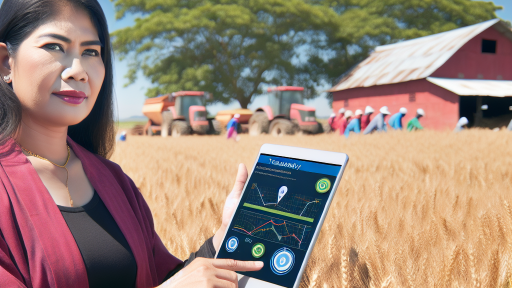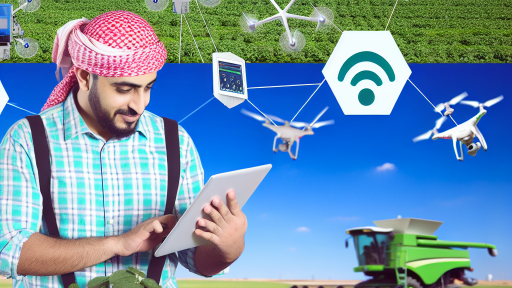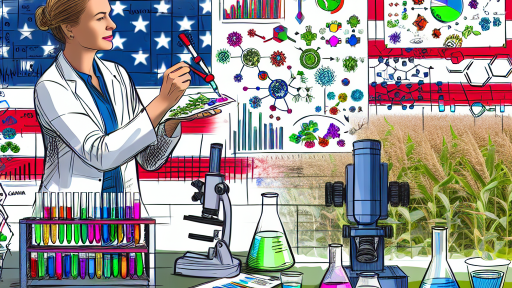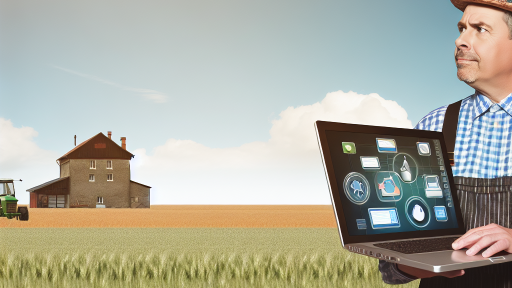Understanding Controlled Environment Agriculture (CEA)
Definitions of Controlled Environment Agriculture
Controlled Environment Agriculture, or CEA, refers to modern agricultural practices.
These methods grow crops in controlled settings like greenhouses or indoor farms.
CEA optimizes plant growth by regulating temperature, light, moisture, and nutrients.
Key Concepts in CEA
Crops benefit from increased efficiency in resource usage.
Water consumption significantly decreases compared to traditional farming methods.
CEA can substantially reduce the reliance on pesticides.
This technique enhances crop quality and yield through precise control of conditions.
Components of CEA Systems
CEA systems utilize several technologies to maintain optimal environments.
- Hydroponics allows soil-less growth using nutrient-rich water solutions.
- Aeroponics suspends plants in air and mists them with nutrients.
- Vertical farming maximizes space by stacking layers of crops.
These systems often incorporate automation for monitoring and adjustments.
Applications of CEA
CEA is applicable in various environments, including urban areas and arid regions.
It provides fresh produce in locations with limited agricultural land.
This method can support local food systems and reduce transportation costs.
Future Trends in CEA
Technological advancements will continue to shape CEA practices.
Artificial intelligence and machine learning will aid in data collection and analysis.
This will help optimize growing conditions and increase yields further.
Transform Your Agribusiness
Unlock your farm's potential with expert advice tailored to your needs. Get actionable steps that drive real results.
Get StartedMoreover, sustainability measures will play a crucial role in future trends.
The Rise of Vertical Farming: Advantages and Market Potential
Introduction to Vertical Farming
Vertical farming represents a revolutionary concept in agriculture.
This method utilizes vertical space to grow crops.
As a result, it can significantly increase food production.
Additionally, it allows for year-round cultivation regardless of weather conditions.
Benefits of Vertical Farming
Vertical farming offers several advantages over traditional farming methods.
First, it optimizes space utilization immensely.
Farmers can grow more crops on smaller land areas.
Moreover, vertical farms use less water compared to conventional farms.
This efficiency helps conserve an essential resource.
Furthermore, controlled environments reduce the need for pesticides.
As a consequence, produce is healthier for consumers.
Market Potential for Vertical Farming
The market for vertical farming is expanding rapidly.
Urban areas present a unique opportunity for vertical farms.
As populations grow, so does the demand for fresh produce.
Hence, urban vertical farms can supply local markets efficiently.
Recent research indicates substantial investments in vertical farming are on the rise.
Challenges Facing Vertical Farming
Despite its benefits, vertical farming faces some challenges.
The initial investment cost for technology can be high.
Additionally, energy consumption remains a significant concern.
Developing sustainable energy solutions is crucial for the industry’s future.
Moreover, attracting skilled labor is essential for successful operations.
Future Trends in Vertical Farming
Looking ahead, technological advances will drive vertical farming growth.
Automation and AI can increase efficiency and reduce labor costs.
Showcase Your Farming Business
Publish your professional farming services profile on our blog for a one-time fee of $200 and reach a dedicated audience of farmers and agribusiness owners.
Publish Your ProfileMoreover, innovations in LED lighting will enhance crop yields.
As a result, the industry will likely become more sustainable over time.
Implications of Vertical Farming for Future Food Production
Vertical farming stands at the forefront of agricultural innovation.
Its advantages and market potential make it a viable solution for future food demands.
As challenges are addressed, it can reshape food production for a growing global population.
Technological Innovations Impacting CEA
Sensors in Controlled Environment Agriculture
Sensors play a critical role in controlled environment agriculture (CEA).
They monitor vital parameters like temperature, humidity, and soil moisture.
Real-time data helps farmers make informed decisions.
Moreover, advanced sensors enable precise irrigation and fertilization.
This technology minimizes waste and maximizes resource efficiency.
Automation Enhancements
Automation transforms traditional farming practices in CEA.
Automated systems manage climate control and nutrient delivery.
These systems reduce labor costs and increase productivity.
Farmers can focus on strategic planning and crop management.
Overall, automation leads to more efficient food production.
The Role of Artificial Intelligence
Artificial intelligence (AI) drives the future of CEA.
AI analyzes data from sensors to optimize growing conditions.
This technology predicts yield and harvest times accurately.
Additionally, AI can identify pests and diseases early on.
As a result, farmers can implement targeted interventions.
Integration of Technologies
Integrating sensors, automation, and AI creates a smart farming ecosystem.
This combination streamlines operations and enhances decision-making.
Farmers benefit from improved crop health and yield consistency.
Consequently, they can better meet consumer demand.
The future of agriculture relies on these technological innovations.
See Related Content: Top Sensor Technologies for Sustainable Agriculture
Sustainability in Controlled Environments: Energy Efficiency and Resource Management
Energy Efficiency in Controlled Environment Agriculture
Energy efficiency plays a vital role in controlled environment agriculture (CEA).
Farmers benefit from reducing energy costs through optimal equipment use.
Utilizing advanced technologies enhances energy management systems.
For instance, LED lighting provides energy savings compared to traditional options.
Moreover, automated climate control systems can save significant energy.
These systems adjust environmental parameters based on real-time needs.
As a result, crops thrive while minimizing energy consumption.
Investing in renewable energy sources also boosts sustainability.
Solar panels for energy generation are increasingly popular among farmers.
Resource Management in Controlled Environments
Effective resource management begins with water conservation.
Hydroponic and aquaponic systems use significantly less water than traditional farming.
These systems recycle water, ensuring minimal waste.
Farmers are increasingly adopting these innovative practices.
Furthermore, precision farming techniques optimize resource use.
Showcase Your Farming Business
Publish your professional farming services profile on our blog for a one-time fee of $200 and reach a dedicated audience of farmers and agribusiness owners.
Publish Your ProfileBy employing sensors, farmers monitor soil and plant conditions closely.
This data-driven approach allows for targeted irrigation and fertilization.
Consequently, farmers achieve higher yields with fewer inputs.
Reducing Waste in Controlled Environments
Reducing waste is another critical component of sustainability.
Implementing composting systems helps recycle organic materials.
This practice enriches the soil without synthetic fertilizers.
Additionally, farmers are rethinking packaging materials to minimize plastic use.
Utilizing biodegradable or recyclable options supports environmental goals.
Investing in waste-to-energy systems also offers benefits.
These systems convert agricultural waste into usable energy.
Overall, reducing waste contributes to a more sustainable agricultural model.
Adoption of Smart Technologies
Smart technologies are transforming the landscape of controlled environment agriculture.
Integrating Internet of Things (IoT) devices enhances efficiency and monitoring.
Farmers can track crop health, growth rates, and resource usage remotely.
As a result, timely decisions are made for optimal production.
Data analytics further supports decision-making processes in CEA.
Collecting and analyzing data helps identify areas for improvement.
Additionally, machine learning algorithms predict trends and potential challenges.
Farmers can adapt practices based on those insights, optimizing their operations.
Collaboration and Knowledge Sharing
Collaboration among farmers promotes sustainable practices in controlled environments.
Joining regional farming networks facilitates knowledge exchange.
Farmers share successes and challenges, allowing for collective problem-solving.
Moreover, partnerships with research institutions enhance innovation.
Access to the latest research helps improve agricultural methods.
These collaborations pave the way for more sustainable farming solutions.
Ultimately, sustainability becomes a shared goal for all stakeholders.
Uncover the Details: Comprehensive Agri-Fintech Overview Of Digital Payment Solutions For Farmers
The Role of Hydroponics and Aquaponics in Modern Farming Trends
Understanding Hydroponics
Hydroponics revolutionizes traditional farming methods.
This technique allows growers to cultivate plants without soil.
Instead, it uses nutrient-rich water solutions to nourish plants.
Hydroponics can enhance growth rates significantly.
Moreover, it requires less water compared to conventional farming.
This method helps mitigate the impact of droughts on crop production.
Farmers can cultivate in controlled environments throughout the year.
Consequently, they can grow a variety of crops irrespective of climate conditions.
Hydroponic systems are scalable from home gardens to large farms.
As a result, they attract both small-scale and commercial growers.
Exploring Aquaponics
Aquaponics combines aquaculture with hydroponics effectively.
It involves raising fish alongside plants in a symbiotic environment.
Fish waste provides essential nutrients for the plants.
Showcase Your Farming Business
Publish your professional farming services profile on our blog for a one-time fee of $200 and reach a dedicated audience of farmers and agribusiness owners.
Publish Your ProfileIn return, plants filter the water, keeping it clean for the fish.
This closed-loop system maximizes resource efficiency.
It minimizes the need for chemical fertilizers or pesticides.
Aquaponics systems can produce fish, vegetables, and herbs simultaneously.
This diversity can lead to higher overall yields for farmers.
As interest in sustainability grows, aquaponics is gaining popularity.
Benefits for Modern Farmers
Both hydroponics and aquaponics address food security concerns.
They enable farmers to grow high-quality produce with limited land.
Controlled environments reduce the risk of pests and diseases.
Additionally, these methods lower transportation costs due to localized production.
Farmers enjoy quicker harvest cycles and higher turnover rates.
This increased efficiency can result in improved profitability.
Furthermore, consumers are increasingly drawn to locally grown products.
Sustainable practices resonate with environmentally conscious buyers.
Technological Innovations
Technological advances play a crucial role in these systems.
Automation and monitoring tools enhance efficiency and productivity.
IoT devices provide real-time data about nutrient levels and environmental conditions.
Farmers can adjust parameters quickly to optimize growth.
Additionally, software solutions streamline operations and supply chain management.
These innovations make hydroponics and aquaponics more accessible.
Consequently, more farmers are adopting these methods today.
Market Trends and Future Outlook
The market for hydroponic and aquaponic produce is expanding rapidly.
Consumers are seeking fresh and organic foods from reliable sources.
Major retailers are increasingly including these products in their offerings.
As a result, farmers can tap into premium pricing opportunities.
Future trends suggest a growing focus on vertical farming as well.
This method complements hydroponic and aquaponic systems effectively.
Ultimately, these innovative practices promise to shape the future of agriculture.
See Related Content: Revolutionizing Farming With Innovative Crop Disease Detection Technologies
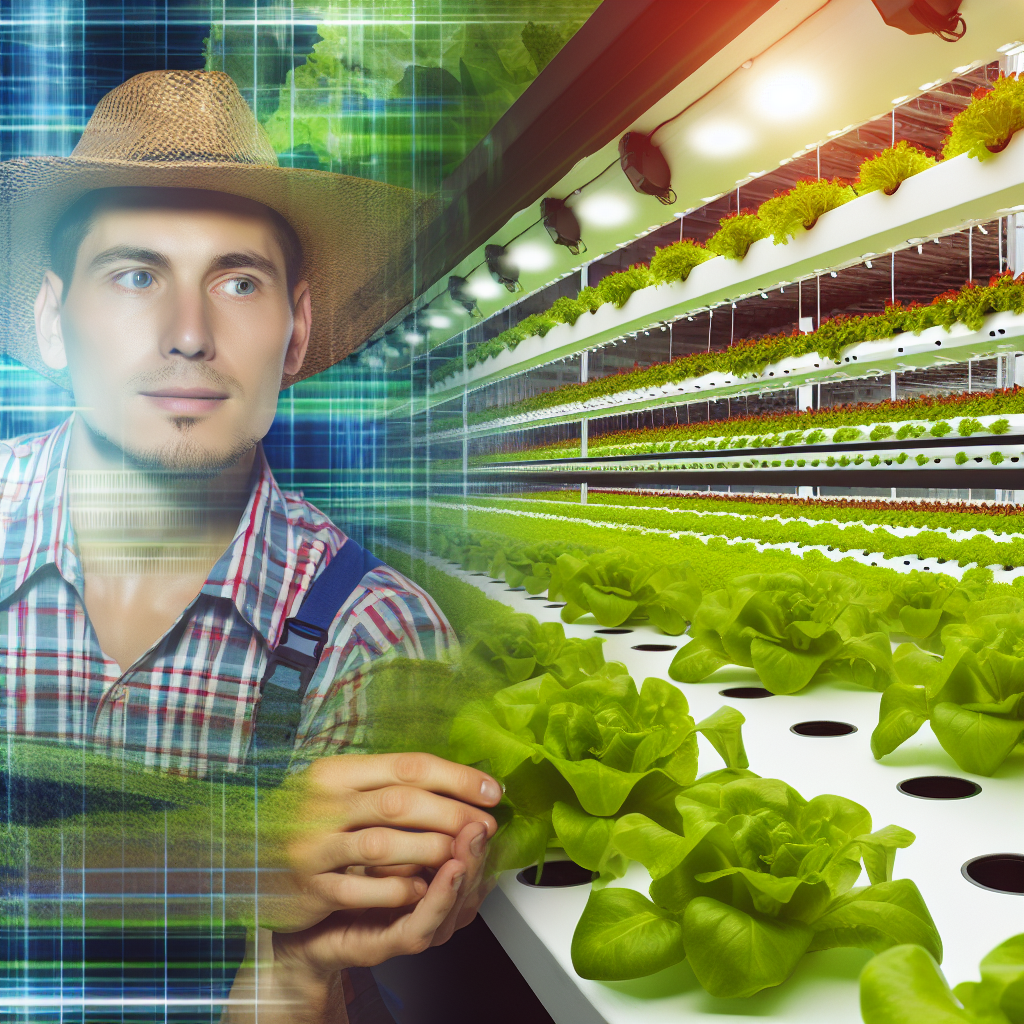
Consumer Demand and Market Trends
Understanding Changing Preferences
Consumer preferences have rapidly evolved in recent years.
People increasingly demand fresh, locally sourced products.
Additionally, health concerns drive the demand for pesticide-free options.
Controlled environment agriculture (CEA) effectively addresses these trends.
Meeting Market Demands with CEA
CEA offers fresh produce year-round, regardless of season.
This allows for consistent supply, meeting consumer expectations.
Moreover, local production reduces transportation costs and emissions.
Thus, CEA supports sustainability while boosting local economies.
Responding to Sustainability Concerns
Environmental sustainability has become a focal point for consumers.
CEA often utilizes less water and land than traditional farming.
This method reduces the ecological footprint of food production.
Showcase Your Farming Business
Publish your professional farming services profile on our blog for a one-time fee of $200 and reach a dedicated audience of farmers and agribusiness owners.
Publish Your ProfileFurthermore, CEA systems can recycle and repurpose waste effectively.
Technology’s Role in CEA and Consumer Preferences
Advancements in technology enhance CEA’s efficiency and appeal.
Smart sensors and automation improve crop monitoring and management.
As a result, growers can maximize yield while minimizing waste.
This innovative approach attracts eco-conscious consumers.
Strategic Marketing for CEA Products
Effective marketing strategies capitalize on evolving consumer trends.
Brands emphasize transparency to build trust with consumers.
Additionally, storytelling about local production enhances brand loyalty.
Using social media to share insights can engage a wider audience.
Learn More: Biomass Digesters for Renewable Farm Energy Production
Regulatory Challenges and Opportunities in Controlled Agriculture
Understanding the Regulatory Landscape
Controlled agriculture operates within a complex regulatory framework.
Farmers often navigate various regulations related to food safety, environmental impact, and labor.
Compliance can be time-consuming and costly for many operations.
However, staying informed can lead to better adherence and fewer penalties.
Opportunities for Innovation
Regulatory requirements often drive innovation in controlled agriculture.
For example, farmers invest in technology to enhance compliance and improve yields.
This technology can also streamline operations and reduce operating costs.
Moreover, grants and funding programs promote development in sustainable practices.
Adapting to Local and National Policies
Farmers must stay updated on local and national agricultural policies.
Policy changes can impact resource availability and market access.
By proactively engaging with policymakers, farmers can advocate for beneficial regulations.
Ultimately, strong relationships with regulatory bodies foster a more favorable environment.
Navigating International Regulations
International trade agreements influence controlled agriculture practices.
Farmers exporting their goods must comply with global standards and regulations.
Understanding these requirements is crucial for maintaining competitiveness.
Furthermore, awareness of international trends can inspire local innovation.
Building a Support Network
Collaboration with industry associations and research institutions is vital.
These organizations offer resources and guidance on regulatory compliance.
Networking can also lead to sharing best practices among farmers.
Ultimately, a strong support network enhances resilience against regulatory hurdles.
Case Studies: Successful CEA Operations and Lessons Learned
Innovative Greenhouse Solutions in Urban Farming
Urban Green Farms implemented cutting-edge greenhouse technology in Chicago.
This approach maximized space while promoting sustainable practices.
The greenhouses use hydroponics to grow organic vegetables effectively.
As a result, they reduced water usage by 90% compared to traditional farming.
Furthermore, they partnered with local restaurants to supply fresh produce.
This collaboration increased community awareness and support for local food sources.
Vertical Farming Success in New York City
FarmFresh NYC demonstrated the potential of vertical farming systems.
This company utilizes LED lighting to enhance plant growth indoors.
They achieved year-round production of leafy greens and herbs.
Importantly, they decreased transportation costs through local sales.
Showcase Your Farming Business
Publish your professional farming services profile on our blog for a one-time fee of $200 and reach a dedicated audience of farmers and agribusiness owners.
Publish Your ProfileFeedback emphasized the freshness and flavor of their products.
Additionally, this method attracted investment for expansion opportunities.
The Role of Automation in CEA
AgriTech Solutions showcased the impact of automation in controlled environments.
They integrated sensors and AI to monitor plant health and growth conditions.
This technology allowed for precise nutrient delivery and climate control.
Ultimately, it resulted in improved yields and reduced labor costs.
Moreover, data collected informed future operational decisions.
Challenges and Resilience in CEA
The Bloom Group faced significant challenges with pest management in their system.
They initially struggled with organic pest control measures.
After experimenting, they successfully implemented beneficial insect strategies.
Lessons learned led to the development of a comprehensive pest management plan.
Now, they educate other farmers on effective pest control techniques.
Community Engagement and Education
Cultivate Academy emphasizes community involvement in their operations.
They host workshops and tours to educate the public on CEA practices.
This initiative fosters local interest and participation in indoor farming.
Furthermore, they collaborate with schools for educational programs.
Their efforts create a positive impact on local food systems.
Additional Resources
The Omnivore’s Delusion: Against the Agri-intellectuals | American …
11 Vertical Farming Advantages: Complete Breakdown | Eden Green

